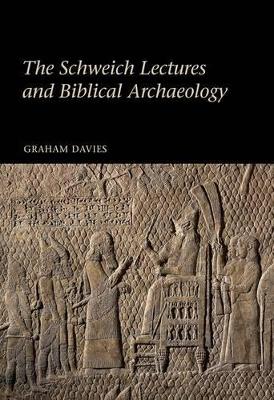Schweich Lectures on Biblical Archaeology
1 total work
The first Schweich Lectures were given by Professor S. R. Driver of Oxford University in 1908 and the British Academy celebrated the centenary of the lectures with a single lecture given by Professor Davies in 2008. This book is an amplified version of that lecture, with each of its three chapters developing a theme relevant to the occasion. The Lectures, on aspects of the study of antiquity in its relationship to the Bible, were established by a gift from Constance
Schweich (later Mrs Goetze) in memory of her late father, Leopold Schweich. The first chapter brings together biographical information (including some previously unpublished documents) about the Schweichs, who were an originally German Jewish family with close connections to the distinguished chemist
and industrialist Ludwig Mond. The donation was the first major benefaction received by the British Academy, which had been founded in 1901 but initially had no Government funding, and the second chapter uses archival and published sources to reconstruct the circumstances and the history of the lectureship. An Appendix lists the names of all the lecturers, their subjects and details of the publication of their lectures. The final chapter, 'Archaeology and the Bible - A Broken Link?', examines
broader questions about 'biblical archaeology' which arose in the later twentieth century, in the light of developments in archaeological theory and biblical scholarship, and considers whether there is still a future for collaboration between the two disciplines. The volume provides a glimpse into
Jewish philanthropy in England in the Edwardian era and a critical assessment of the changing relationship between archaeology and biblical studies down to the present day.
Schweich (later Mrs Goetze) in memory of her late father, Leopold Schweich. The first chapter brings together biographical information (including some previously unpublished documents) about the Schweichs, who were an originally German Jewish family with close connections to the distinguished chemist
and industrialist Ludwig Mond. The donation was the first major benefaction received by the British Academy, which had been founded in 1901 but initially had no Government funding, and the second chapter uses archival and published sources to reconstruct the circumstances and the history of the lectureship. An Appendix lists the names of all the lecturers, their subjects and details of the publication of their lectures. The final chapter, 'Archaeology and the Bible - A Broken Link?', examines
broader questions about 'biblical archaeology' which arose in the later twentieth century, in the light of developments in archaeological theory and biblical scholarship, and considers whether there is still a future for collaboration between the two disciplines. The volume provides a glimpse into
Jewish philanthropy in England in the Edwardian era and a critical assessment of the changing relationship between archaeology and biblical studies down to the present day.
